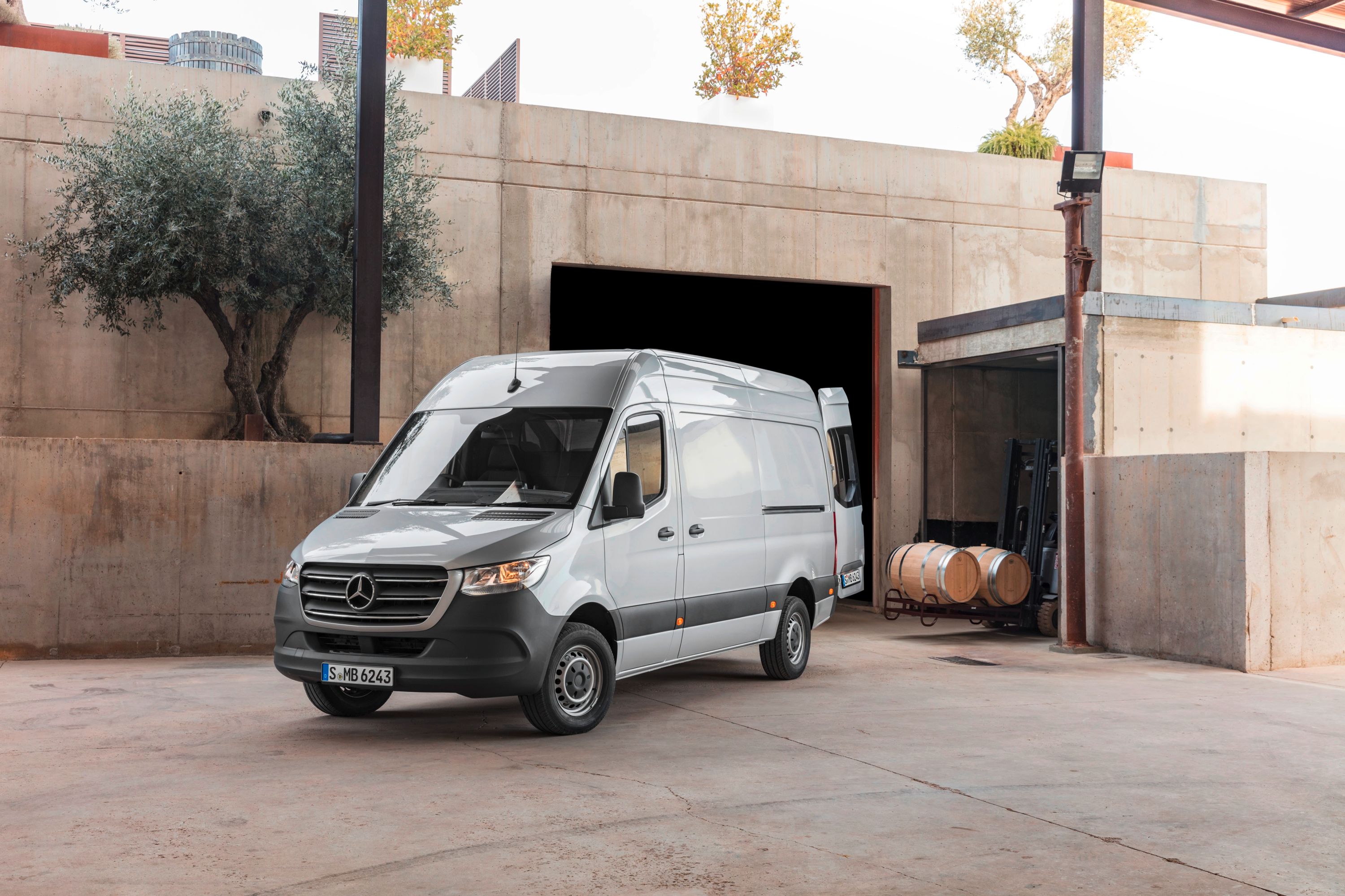
Mercedes has entered the electric commercial van segment with the arrival of the 2024 Mercedes-Benz eSprinter, the first direct rival to the Ford E-Transit.
The all-electric version of the Mercedes-Benz Sprinter Cargo Van will arrive in the US in the second half of 2023, followed by Europe towards the end of this year. Mercedes will produce the eSprinter locally in Charleston, South Carolina, to get around Chicken Tax, with German production to follow for other markets.
The eSprinter features a 113-kWh battery, yielding a range of 248.5 miles on the WLTP's combined cycle and as much as 311 miles on the WLTP's city cycle. Full-size vans are not subject to EPA testing, but US mileage estimates will vary substantially as the WLTP tests are notoriously generous in their estimates.
Comparatively, the Ford E-Transit comes with either a 68- or 75-kWh pack and is only rated at a 196-mile combined WLTP range, with US range estimates of 108-126 miles, configuration depending.
Propulsion comes from a new Mercedes eATS powertrain featuring a permanent magnet synchronous motor on the rear axle that only weighs 286 pounds. Customers can choose between outputs - 134 or 201 horsepower - with up to 295 lb-ft of torque. The van can accommodate up to 488 cubic feet of stuff with a 9,370-lb permissible gross vehicle weight.
Smaller battery packs will be available elsewhere, but North America will receive only the largest. This 113 kWh pack utilizes lithium/iron phosphate (LFP) cell chemistry and is free of cobalt and nickel. It boasts active thermal management for maximum efficiency and is housed in the floor of the chassis for the lowest center of gravity possible.
The eSprinter can AC charge at up to 9.6 kW with an onboard charge or accept up to 115 kW at a DC fast-charging station. Using the latter, charging from 10-80% takes around 42 minutes.
Inside, the eSprinter gains the latest Mercedes-Benz User Experience (MBUX) infotainment system with "Hey, Mercedes" functionality, which was previously only available on passenger vehicles. It's certainly not an EQS Hyperscreen, but Mercedes says the MBUX system is available with "Electric Intelligence" navigation, which can carefully plan routes to end up with the desired state of charge at the destination, and will make suggestions on where to stop to charge en-route, likely at Mercedes-branded charging stations.
Mercedes has taken a similar approach with the eSprinter to what Ford did with the E-Transit: make it look and feel just like the combustion model, but with an electric drivetrain shoehorned in. However, to cater to various configurations, certain elements are modular. Mercedes mentions the drive system (rear), the battery (central) and the high-voltage components housed in the front module as the three modules that remain unchanged in any configuration.
Pricing has not yet been revealed, but Mercedes-Benz Vans has committed to a fully-electric strategy from 2025 and invested 350 million euros in developing the eSprinter.
